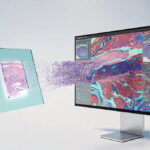As the world of healthcare continues to evolve at an unprecedented pace, clinical trials remain at the forefront of medical research, serving as a crucial tool for developing new treatments and therapies.
Over the past few years, the clinical trial landscape has undergone significant changes with the adoption of new advancements in design and technology. These changes are rapidly transforming the way trials are conducted, and they hold great promise for the future of medical treatments.
To keep pace with the evolving demands of the healthcare industry, clinical trial designers must incorporate innovative design principles and state-of-the-art technologies into their studies. The use of telehealth, mobile apps, wearables, and other digital tools is steadily becoming a popular aspect of clinical trials, making it possible to gather real-time data and analyze trial results more efficiently.
Additionally, significant advances in artificial intelligence (AI) are now providing researchers with a more in-depth understanding of the datasets, enabling them to uncover new and valuable insights that were previously impossible.
Increased Use of Digital Technologies for Data Collection
The future of clinical trials will be shaped by innovations in design and technology. One such innovation is the increased use of digital technologies for data collection. Advances in mobile health (mHealth) technologies, wearable devices, and electronic health records (EHRs) have made it easier for researchers to collect data remotely from clinical trial participants.
This not only reduces the burden on participants but also ensures that data collection is more accurate and reliable. Additionally, digital technologies provide real-time data insights to researchers, allowing for more responsive and efficient trial management.
As clinical trials become increasingly complex, the use of digital technologies for data collection will be a game-changing trend that enhances the efficiency and effectiveness of trial design and execution.
Innovative Trial Designs to Improve Data Quality
One of the most promising innovations in the future of clinical trials San Diego is the use of innovative trial designs to enhance the quality of the data produced. These new designs include adaptive, umbrella, and basket trials, all of which aim to improve the efficiency and reliability of clinical trials. Adaptive trials, for example, allow for real-time adjustments to the study protocol based on collected data, enabling researchers to optimize the trial design as it progresses.
Umbrella trials, on the other hand, investigate a specific biomarker or target to evaluate multiple drugs simultaneously, potentially accelerating the development of effective treatments for targeted patient groups. Similarly, basket trials combine patients with different cancer types but with specific mutations, allowing for the evaluation of multiple targeted therapies simultaneously.
By introducing these innovative designs, clinical trials can generate data quicker and more efficiently, ultimately leading to the development of more effective treatments for patients.
Use of Real-World Evidence to Supplement Clinical Trial Results
One of the most promising innovations in the design and technology of clinical trials is the use of real-world evidence (RWE) to supplement clinical trial results. RWE refers to data captured outside of traditional clinical trial settings, such as electronic health records, claims data, and patient-generated health data.
By incorporating RWE into clinical trial design and analysis, researchers can better understand the real-world impact of interventions and account for factors that may not be captured in traditional trial settings, such as natural history of disease, comorbidities, and patient preference.
This approach can also help expedite the drug approval process, reduce trial costs, and improve patient outcomes. However, there are still challenges associated with the use of RWE, including data quality, bias, and the need for advanced analytics tools to analyze complex datasets.
As the use of RWE continues to gain momentum, it will be important for researchers and regulators to collaborate to address these challenges and develop best practices for integrating RWE into clinical trial design and analysis.
Streamlined Clinical Trial Protocols
One of the key innovations in the future of clinical trials is the development of streamlined protocols. Clinical trial protocols are comprehensive and complex documents that outline all aspects of the study, from recruitment to analysis.
However, the traditional approach to these protocols can result in overly lengthy and complicated documents that can be burdensome to stakeholders and slow down the study. Streamlined protocols aim to simplify and clarify the content of the protocols, while maintaining scientific rigor and regulatory compliance.
By doing so, these protocols can reduce the administrative burden on investigators and trial staff, increase patient enrolment, and improve data quality. Moreover, streamlined protocols can facilitate innovative trial designs such as master protocols and platform trials, which can accelerate drug development and enable personalized medicine.
Overall, streamlined protocols are an important innovation that is expected to improve the efficiency, transparency, and effectiveness of clinical trials.
The Emergence of Patient-Centric Methods to Improve Trial Design and Engagement
The emergence of patient-centric methods to improve trial design and engagement has quickly become a significant trend in clinical trial innovation. With an increased focus on putting the patient at the center of the clinical trial process, there is a growing recognition that the design and execution of clinical trials must thoroughly contemplate the unique needs of each patient cohort.
This approach employs user-centered design concepts to create clinical trials that are more relevant and engaging to the study population, ultimately resulting in higher retention rates and better-quality data.
The progress in this area is fueled by innovative technologies, such as wearables, connected health devices, and mobile applications. These digital tools empower patients to participate more actively in their care, provide real-time data, and offer researchers greater insight into patient behavior throughout the trial.
Moreover, patient-centric methods promote efficient communication and collaboration between investigators, sponsors, and patients, making the trial experience more accessible and transparent. As patient-centric clinical trials continue to gain traction, they will generate better outcomes for patients, investigators, and sponsors alike.
Overall, with the advancements in technology and increased focus on patient-centricity, the clinical trial landscape is poised for significant transformation. New designs, such as adaptive trials, and technologies, such as wearable devices and telemedicine, are improving the efficiency, accuracy, and patient experience of clinical trials.
The integration of artificial intelligence and real-world data further expands the potential to accelerate drug development and improve patient outcomes. As we continue to embrace these innovations, the future of clinical trials holds great promise for both patients and the pharmaceutical industry.
Read Also
- Automated Healthcare Software Solutions: How Intelligent Platforms Are Redefining Clinical, Administrative, and Operational ExcellenceThe healthcare industry is undergoing a seismic transformation. Rising patient volumes, value-based care models, staffing shortages, and complex regulatory demands have prompted organizations to look beyond traditional tools and embrace advanced software automation. As providers search for innovative partners capable of tailoring these sophisticated systems to real-world workflows, many turn to MCSI (Managed Care Systems,… Read more: Automated Healthcare Software Solutions: How Intelligent Platforms Are Redefining Clinical, Administrative, and Operational Excellence
- Why Whole Slide Imaging Shapes the Future of Digital PathologyWhole slide imaging has become one of the most important developments in modern pathology. It changes how tissue is examined, how cases are shared and how pathologists collaborate with the wider care team. More than a technological upgrade, it represents a shift in how laboratories think about their workflow, their storage needs and the tools… Read more: Why Whole Slide Imaging Shapes the Future of Digital Pathology
- Comparing 2025 Dental Practice Management Software OptionsSoftware Key Strengths Potential Limitations Best For Dentimax • Offers both cloud-based and on-premise/server deployment. • Tight integration between imaging (e.g. X-ray sensors) and practice management, charts, treatment planning, imaging all in one. • Transparent pricing and relatively simple UI/usability; solid for small to medium general practices. • May lack some of the… Read more: Comparing 2025 Dental Practice Management Software Options
- Top Innovations in Dermatology and Skincare TechnologiesHave you ever wondered how skincare keeps getting better year after year? From fighting acne to reducing wrinkles, today’s treatments seem more advanced than ever before. The tools and techniques used by dermatologists today are smarter, safer, and more effective than those we had just a few years ago. These breakthroughs don’t just help with… Read more: Top Innovations in Dermatology and Skincare Technologies
- Telehealth and Beyond: Building a Connected Continuum of CareHealthcare is on the verge of a radical transformation. Technology no longer simply supports medicine; it actively shapes how care is delivered and experienced. Achieving a seamless continuum demands more than deploying tools—it requires intentional design, coordinated teamwork, and innovative platforms that adapt to diverse clinical and patient needs. This article explores key strategies for… Read more: Telehealth and Beyond: Building a Connected Continuum of Care
- Optimizing CT Protocols: The Hidden Key to Efficiency and Cost Savings in RadiologyIntroduction: Why CT Protocol Optimization Matters Computed Tomography (CT) is a cornerstone of modern diagnostic imaging, providing critical information across nearly every medical specialty. However, maximizing the value of CT — both clinically and financially — requires more than just advanced hardware. The real secret lies in the optimization of CT protocols. When CT protocols… Read more: Optimizing CT Protocols: The Hidden Key to Efficiency and Cost Savings in Radiology







